Featured Image Credit: ISRO
Lift Off Time | December 6, 2022 – 22:37 UTC | 17:37 EST |
|---|---|
Mission Name | OneWeb 15 |
Launch Provider | SpaceX |
Customer | OneWeb |
Rocket | Falcon 9 Block 5 B1069-4; 51.72 |
Launch Location | Launch Complex 39A (LC-39A), Kennedy Space Center, Florida, USA |
Payload mass | 6,000 kg (~13,000 lbs) |
Where are the satellites going? | Polar low-Earth orbit. Initial orbit TBD, final orbit of 1,200 km |
Will they be attempting to recover the first stage? | Yes |
Where will the first stage land? | Landing Zone 1 (LZ-1), Cape Canaveral Space Force Station, Florida |
Will they be attempting to recover the fairings? | Yes, the fairings will be recovered by Doug |
Are these fairings new? | TBD |
This will be the: | – 188th Falcon 9 launch – 124th Falcon 9 flight with a flight-proven booster – 128th re-flight of a booster – 49th re-flight of a booster in 2022 – 154th booster landing – 79th consecutive landing (a record) – 55th launch for SpaceX in 2022 (a record) – 58th SpaceX launch from LC-39A – 169th orbital launch attempt of 2022 |
Where to watch | Official livestream |
What’s All This Mean?
SpaceX is set to launch 40 OneWeb internet communication satellites atop its Falcon 9 Block 5 rocket. Lifting off from Launch Complex 39A, at the Kennedy Space Center, in Florida, the OneWeb 15 mission will place satellites into a polar orbit, which will raise to a 1,200 km polar orbit. OneWeb 15 will boost the number of satellites launched to 494.
What Is OneWeb?
OneWeb is a planned satellite internet constellation with the goal of providing internet coverage to the entire globe. Similar to SpaceX’s Starlink, the OneWeb constellation aims to deliver semi-low-latency internet to locations where ground-based internet is unreliable or unavailable.
OneWeb plans to have 648 satellites in its constellation, providing them with the 600 satellites needed for global coverage and an additional 48 on-orbit spares in case a satellite fails. These satellites are in a 1,200 km low-Earth polar orbit, which is significantly lower than the global internet services available today. The current satellite internet solutions orbit 35,786 km above the Earth, in geostationary orbit. However, the orbit of OneWeb’s satellites is still significantly higher than the ~550 km orbit that SpaceX’s Starlink satellites use. OneWeb is expecting the final 648 satellite constellation to provide download speeds of roughly 50 Mb/s.

The constellation consists of 18 orbital planes, with 36 satellites in each plane. However, in May 2020, OneWeb submitted an application to the FCC, requesting to increase its constellation size to 48,000 satellites. OneWeb has also announced that the second generation of the OneWeb network will be a global navigation satellite system (GNSS), like GPS.
What Is A OneWeb Satellite?
Each OneWeb satellite has a compact design and a mass of 147.5 kg. The satellites are each equipped with a Ku-band antenna, operating between 12 and 18 GHz. One interesting note is that these satellites will use a slightly abnormal frequency, eliminating interference with satellites in geostationary orbit.
The OneWeb satellites were built by OneWeb Satellites, which is a joint venture between OneWeb and Airbus.
The satellites are designed to deorbit after 25 years safely. However, this leaves many concerned as this orbital region is already the most crowded with space debris.
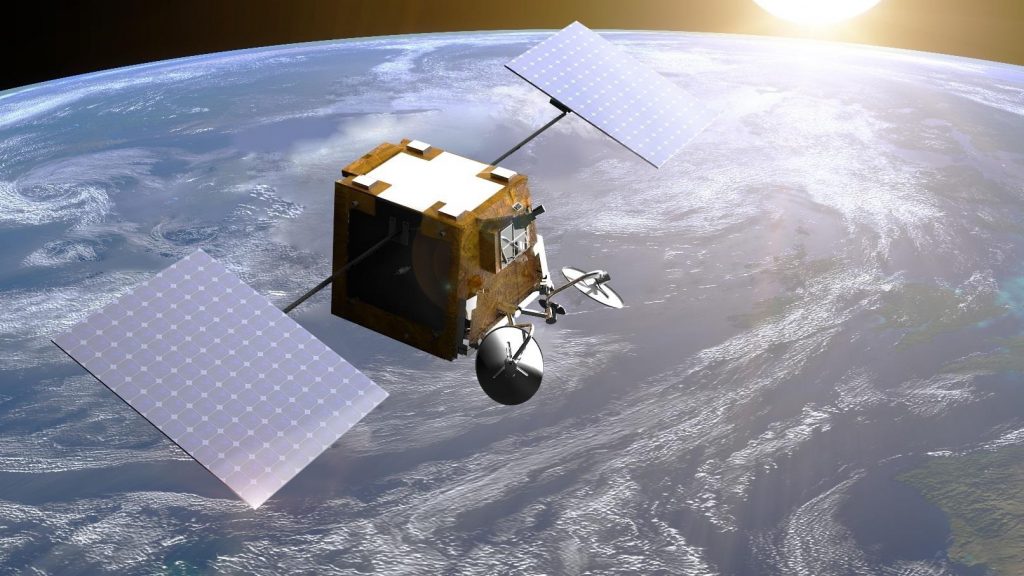
OneWeb’s Return
In March 2020, OneWeb filed for Chapter 11 bankruptcy and laid off most of its employees. However, OneWeb was able to maintain operations for the 74 satellites they currently had in orbit. In November 2020, the UK government and Bharti Enterprises invested over a billion US dollars into OneWeb with the goal of finishing the constellation.
As if these issues weren’t enough, in wake of new European sanctions at the start of the year OneWeb was unable to launch their satellites on the Soyuz vehicle–the rocket that launched the first 13 OneWeb missions. In lieu of this, on April 20, 2022, OneWeb announced launches atop the GSLV Mk III.
What Is Falcon 9 Block 5?
The Falcon 9 Block 5 is SpaceX’s partially reusable two-stage medium-lift launch vehicle. The vehicle consists of a reusable first stage, an expendable second stage, and, when in payload configuration, a pair of reusable fairing halves.
First Stage
The Falcon 9 first stage contains 9 Merlin 1D+ sea-level engines. Each engine uses an open gas generator cycle and runs on RP-1 and liquid oxygen (LOx). Each engine produces 845 kN of thrust at sea level, with a specific impulse (ISP) of 285 seconds, and 934 kN in a vacuum with an ISP of 313 seconds. Due to the powerful nature of the engine, and the large amount of them, the Falcon 9 first stage is able to lose an engine right off the pad, or up to two later in flight, and be able to successfully place the payload into orbit.
The Merlin engines are ignited by triethylaluminum and triethylborane (TEA-TEB), which instantaneously burst into flames when mixed in the presence of oxygen. During static fire and launch the TEA-TEB is provided by the ground service equipment. However, as the Falcon 9 first stage is able to propulsively land, three of the Merlin engines (E1, E5, and E9) contain TEA-TEB canisters to relight for the boost back, reentry, and landing burns.
Second Stage
The Falcon 9 second stage is the only expendable part of the Falcon 9. It contains a singular MVacD engine that produces 992 kN of thrust and an ISP of 348 seconds. The second stage is capable of doing several burns, allowing the Falcon 9 to put payloads in several different orbits.
For missions with many burns and/or long coasts between burns, the second stage is able to be equipped with a mission extension package. When the second stage has this package it has a grey strip, which helps keep the RP-1 warm, an increased number of composite-overwrapped pressure vessels (COPVs) for pressurization control, and additional TEA-TEB.
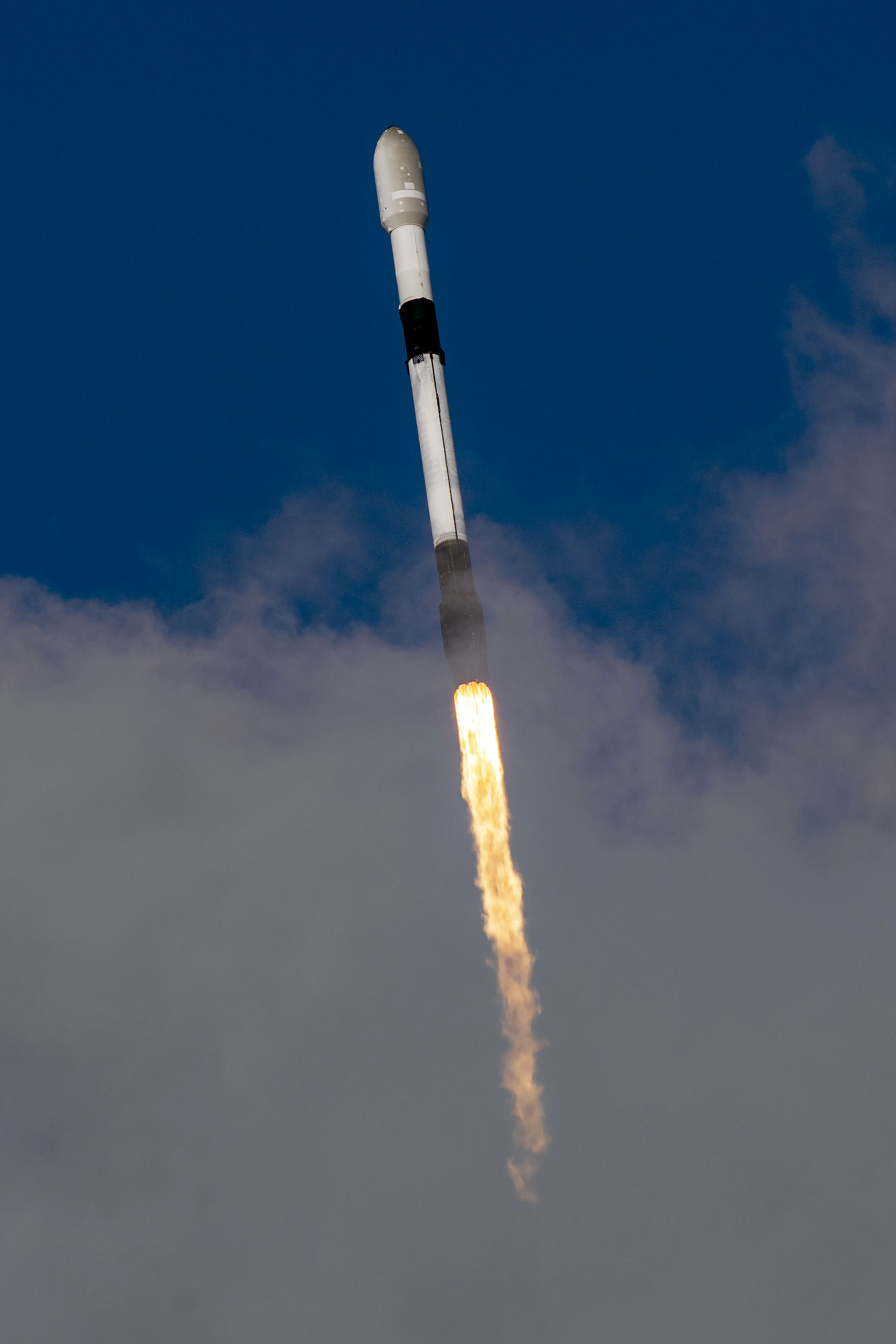
Falcon 9 Booster
The booster supporting the OneWeb 15 mission was B1069, which has supported three previous flights. Hence, its designation for this mission was B1069-4.
| B1069’s missions | Launch Date (UTC) | Turnaround Time (Days) |
| CRS-24 | December 21, 2021 10:07 | N/A |
| Starlink Group 4-23 | August 27, 2022 03:41 | 249.73 |
| Hotbird 13F | October 15, 2022 05:22 | 48.07 |
| OneWeb 15 | December 5, 2022 22:37 | 51.72 |
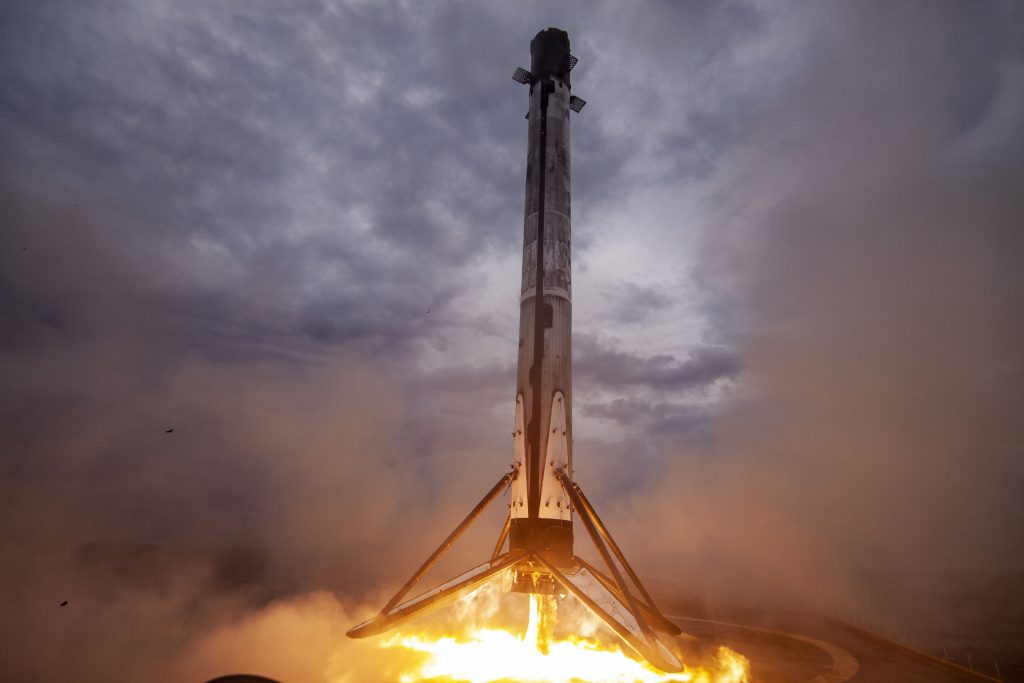
Falcon 9 Fairings
The Falcon 9’s fairing consists of two dissimilar reusable halves. The first half (the half that faces away from the transport erector) is called the active half, and houses the pneumatics for the separation system. The other fairing half is called the passive half. As the name implies, this half plays a purely passive role in the fairing separation process, as it relies on the pneumatics from the active half.
Both fairing halves are equipped with cold gas thrusters and a parafoil which are used to softly touch down the fairing half in the ocean. SpaceX used to attempt to catch the fairing halves, however, at the end of 2020 this program was canceled due to safety risks and a low success rate. On OneWeb 15, SpaceX will attempt to recover the fairing halves from the water with their recovery vessel Doug.
In 2021, SpaceX started flying a new version of the Falcon 9 fairing. The new “upgraded” version has vents only at the top of each fairing half, by the gap between the halves, whereas the old version had vents placed spread equidistantly around the base of the fairing. Moving the vents decreases the chance of water getting into the fairing, making the chance of a successful scoop significantly higher.
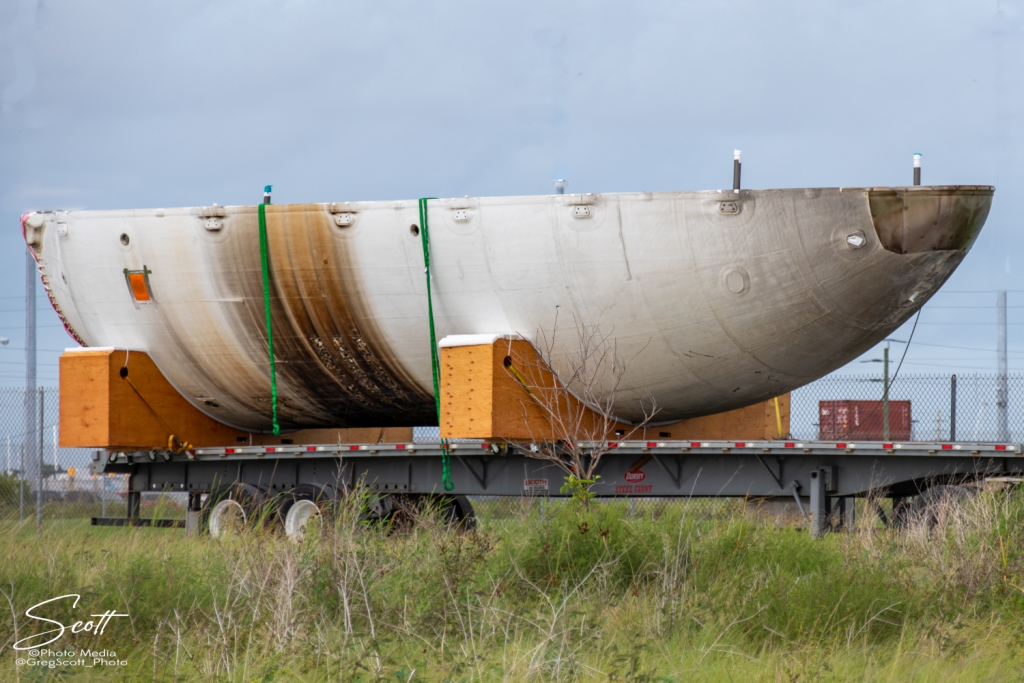

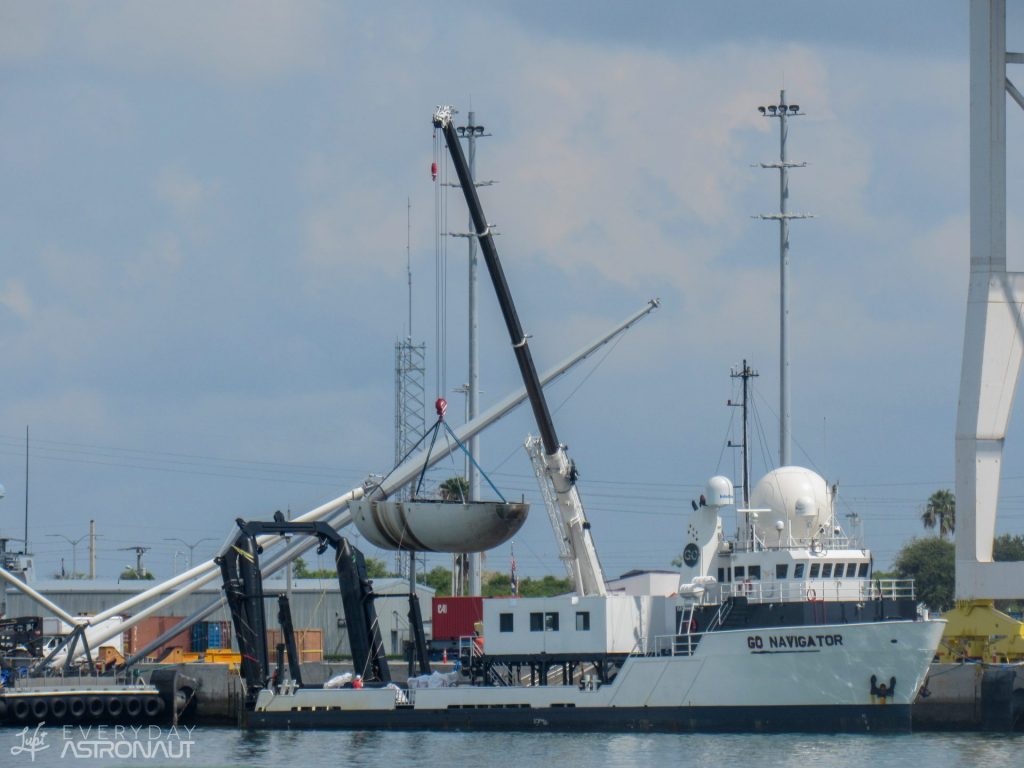
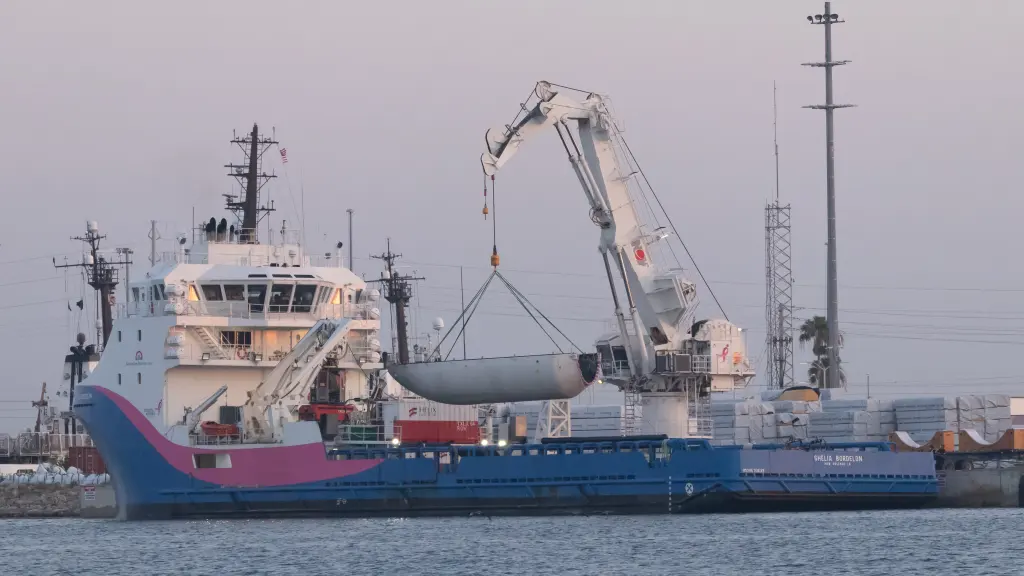
OneWeb 15 Countdown
All times are approximate
| HR/MIN/SEC | EVENT |
|---|---|
| 00:38:00 | SpaceX Launch Director verifies go for propellant load |
| 00:35:00 | RP-1 (rocket grade kerosene) loading underway |
| 00:35:00 | 1st stage LOX (liquid oxygen) loading underway |
| 00:16:00 | 2nd stage LOX loading underway |
| 00:07:00 | Falcon 9 begins engine chill prior to launch |
| 00:01:00 | Command flight computer to begin final prelaunch checks |
| 00:01:00 | Propellant tank pressurization to flight pressure begins |
| 00:00:45 | SpaceX Launch Director verifies go for launch |
| 00:00:03 | Engine controller commands engine ignition sequence to start |
| 00:00:00 | Falcon 9 liftoff |




